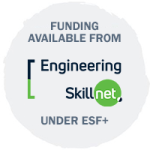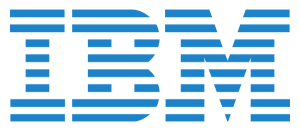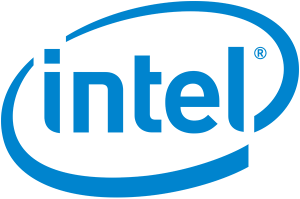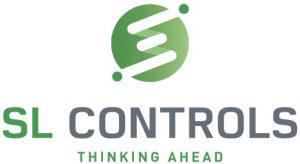Overview
 NEXT AVAILABLE COURSE: June 2025| PRICE: €1,550 per candidate
NEXT AVAILABLE COURSE: June 2025| PRICE: €1,550 per candidate
Robots provide an ever increasing number of automation efficiencies in the workplace. We know that maintenance staff aren’t machine builders, so we focus on the essential skills related to breakdowns, PM’s and adjustments. The purpose is to equip the learner with the relevant knowledge and skills to interact and troubleshoot industrial robotic systems and to carry out maintenance activities.
Who should attend the QQI Level 6 Robot Programming & Troubleshooting course:
Maintenance technicians responsible for maintaining, operating, and troubleshooting industrial robotic systems in manufacturing and automation environments. Automation engineers who aim to deepen their understanding of industrial robotics technology and improve their skills in programming, troubleshooting, and maintenance. Managers overseeing maintenance operations in industrial facilities, wanting to better understand and manage robotic systems. Individuals with a background in mechatronics or related fields who wish to specialise in robot programming and maintenance.
Why Should I Attend?
This programme focuses on the study of industrial robotic systems with the emphasis on application and troubleshooting. Learners will gain an understanding of the history, evolution, essential components, and key concepts of robotics, including its interdisciplinary nature. The hands-on learning activities will familiarise learners with different types of robots, their design, construction and control and develop skills to independently analyse robotic tasks and programme and troubleshoot industrial robots to perform the given task.
Course Objectives
And the end of the course learners will be able to:
- Understand the key components, concepts and terminology in a typical robotic cell.
- Describe the mathematical model of a multilink system and how individual joints effect the position and velocity of the end effector.
- Integrate new sensors and actuators to a robotic cell.
- Integrate a vision system for environmental perception.
- Program robotic tasks, by applying a range of relevant techniques.
- Troubleshoot a broad range of faults by inferring the visual indications and error message.
- Conduct maintenance activities in a safe manner utilizing the relevant technical documentation.
Course Content
Introduction to Robotics – What You’ll Learn
- Robot types: Industrial robot, collaborative robot, and wheeled robot
- Components in a typical robot work cell: Manipulator, End effector (tool), controller, power supply, safety equipment and barriers, operator station and HMI, software, other peripheral devices (vision system, sensor mounts etc), Cabling: internal and external
Safety – What You’ll Learn
- Different warning plates and labels that are used with robots.
- Mechanical Safety – Motion monitoring, reduced speed zones, End effector pinch points, collision detection and collision avoidance, protective barriers, E-stop and remote E-stop, mechanical enclosure, payload limits, care while programming, risk assessment.
- Electrical safety- Lockout tag out, ground fault protection, electrical isolation, overcurrent protection, E-stop, remote E-stop, secondary power, wires, and cables
- Nagivating documentation and manuals.
- How to install and transport the robot, transport configurations.
- Safety requirements for industrial robots – standards and regulations
Kinematics of Robot -What You’ll Learn
- Mechanics of multi-link system: Serial and parallel
- Robot configuration: rotary joint and linear joint, (Cartesian, SCARA, Articulated, Cylindrical)
- Work envelop and work volume.
- Degree of freedom and number of axis.
- Overview of robot calculatons for position, trajectory, velocity, and force.
Sensors and Actuators – What You’ll Learn
- Robotic End effectors and their application: Needle, Grippers, welding guns, Vacuum head, Magnetic
- Sensors: Interoceptive and exteroceptive sensors, vision sensors
- Integrating new sensors to the robot
Programming – What You’ll Learn
- TCP: Robot coordinate and world coordinate, frames, calculation of TCP (standard and 4-point method)
- Robot motion: Point-to-point, Linear and Circular
- Robot Programming (simple basic programs): Teach pendant method, HMI, special software, Graphical programming.
- How to measure the accuracy of a robot and how it changes along with the work volume.
- Integration of robotic vision system and performing tasks with the help of vision system
Robotic Maintenance and Troubleshooting – What You’ll Learn
- Common faults, errors and messages shown by HMI in teach pendant and how to solve them.
- How to replace mechanical/electrical components and the procedure to follow restoration and restart after maintenance.
- Recalibration after maintenance- axis recalibration, auto recalibration.
- Recalibration of the TCP after replacement.
- Lubrication.
- Software installation and system updating.
- Backup and restore.
COURSE DELIVERY
- The course is delivered over 6 instructor led days. There are self directed hours to be completed before the course starts, between course days and before exams.
- Course days are scheduled over 3 weeks to enable sufficient time for self directed learning.
- Maximum group size of 10 to ensure individual attention and pace can be adjusted to learner needs
- Highly qualified and experienced trainers.
- Courseware includes quizzes and interactive learning materials and workbooks for practical exercises and revision
- Students will need a laptop or tablet to complete the course. Technotraining may be able to provide a laptop for the duration of the course, depending on availability
QQI Assessment
- Theory Examinations. 20% of overall mark
- Practical Examinations. 50% of overall mark
- Project. 30% of overall mark
QQI Accreditation and Progression
- 6N22480 QQI Level 6 Minor award in Robot Programming & Troubleshooting
- This Award is an elective component required for the Advanced Certificate in Industrial Automation Technology 6M25693
Entry Requirements
No previous formal qualification is required but learners should have relevant work or life experience to have reached the standards of knowledge, skill and competence associated with Level 5 of the National Framework of Qualifications.
Though no specific qualification is required entrants should have some prior technical or mechanical experience or knowledge. Ideally they would have had exposure to electrically controlled equipment and/or a manufacturing environment.
Competence in written and spoken English is essential. International students whose first language is not English are required to have an appropriate score in an approved examination in English language. We accept an IELTS test score of 6. We also accept IELTS equivalents such as TOELF, Cambridge exams and Duolingo English Test.
Learners should have good computer literacy skills. This includes use of email, microsoft word, internet searches. Self-directed learning also requires learners to have good self motivation and time management skills. Again, further details and tips can be found in the Learner Handbook. You will be required to have a laptop computer.
If you would like to assess your entry level knowledge, relative to course content, please contact us and we can set you up with a free trial on our e-learning platform.
RPL is a process whereby a learner with prior qualifications and/or relevant work experience may apply to exemptions from attending the full course. Note learners will still need to pass the assessments. You will be asked to submit an application form for RPL and will be required to provide proof of qualification. RPL requirements are different for different courses and awards.
When we receive your booking request we will call you to go through an enrolment checklist with you to ensure that you meet all entry requirements for the course you have selected.
If you have any questions before making a booking request, we’d love to hear from you.
This course is funded by the Engineering Skillnet. Please contact Fiona Fennell [email protected] for further details.








































